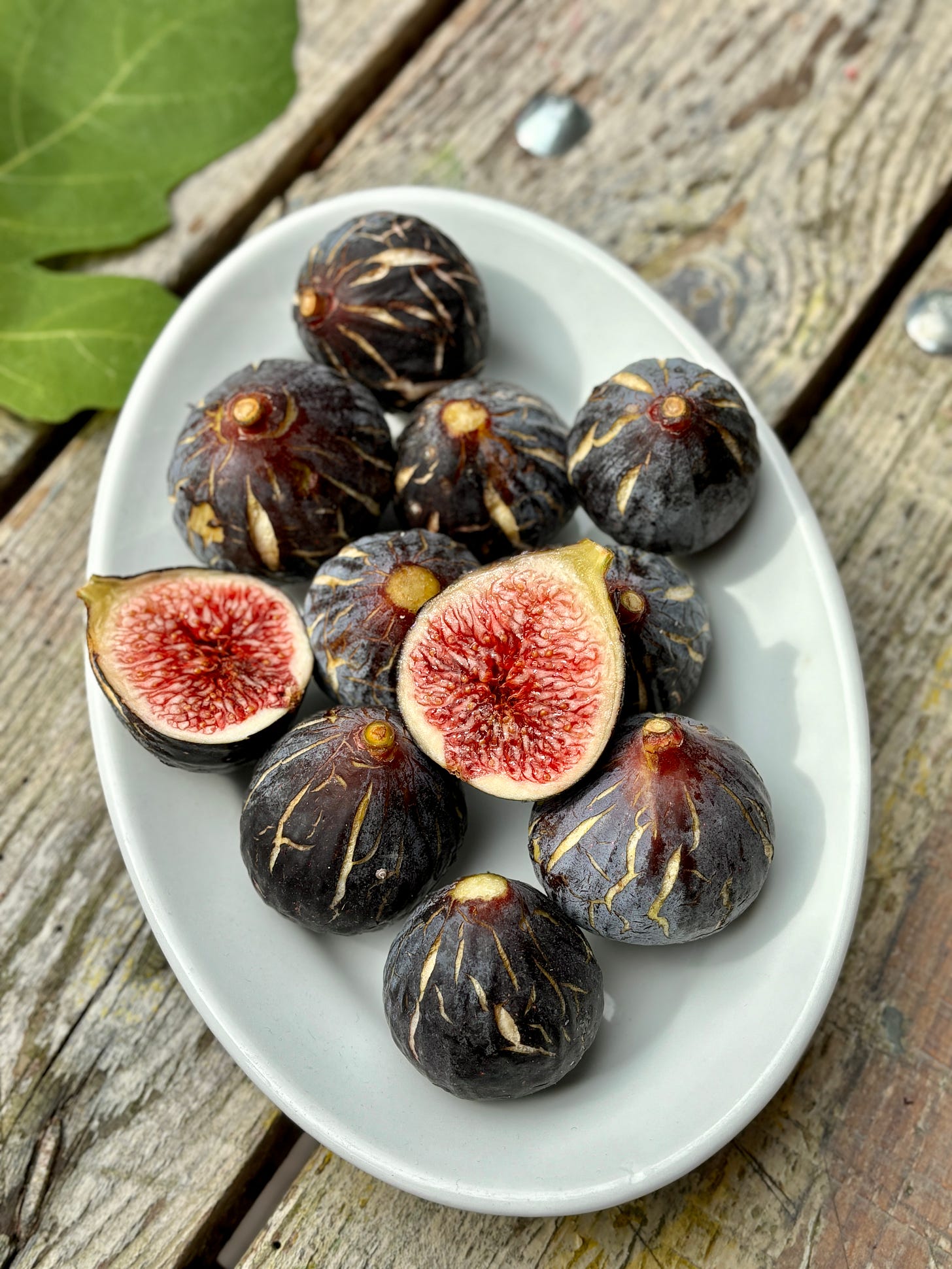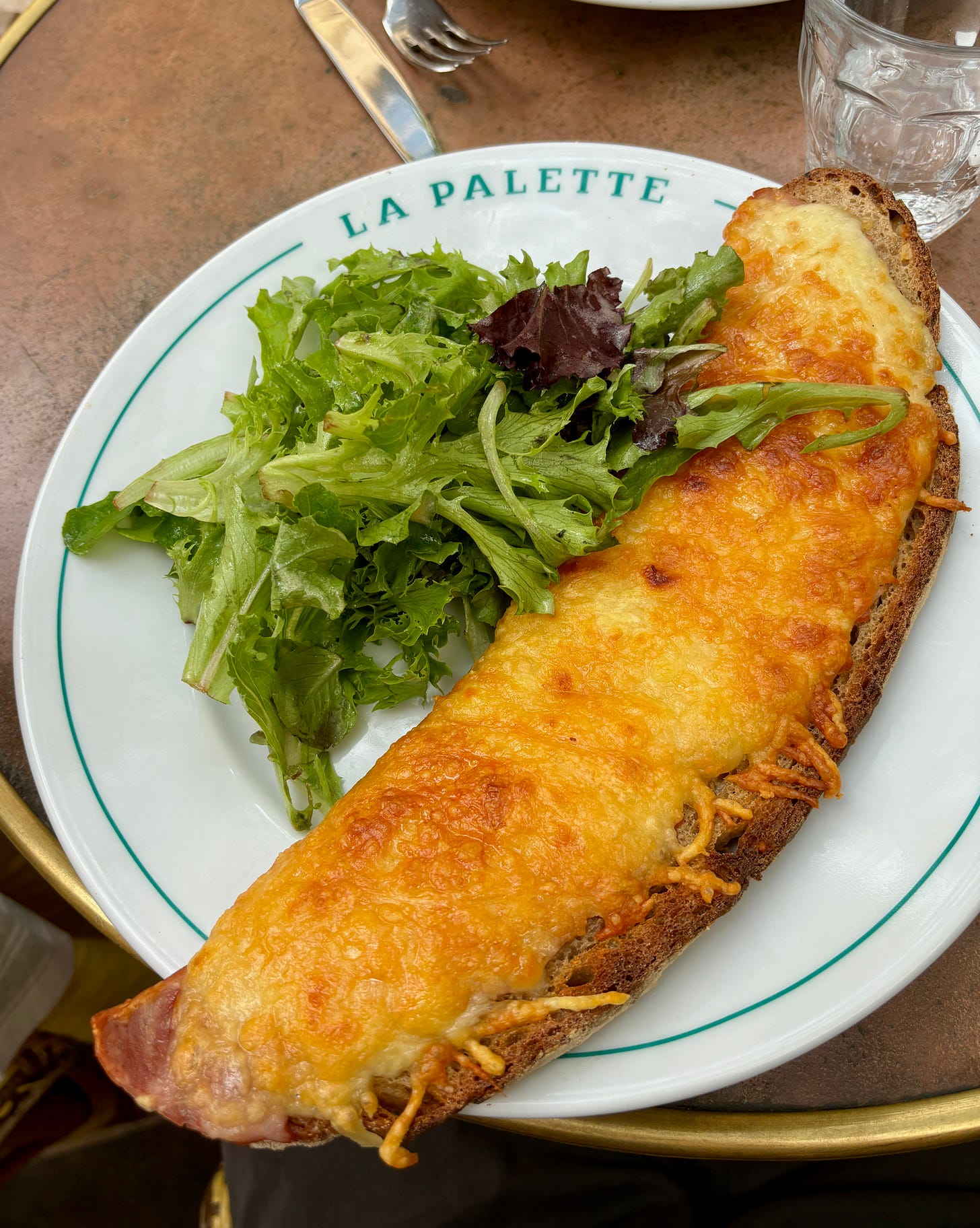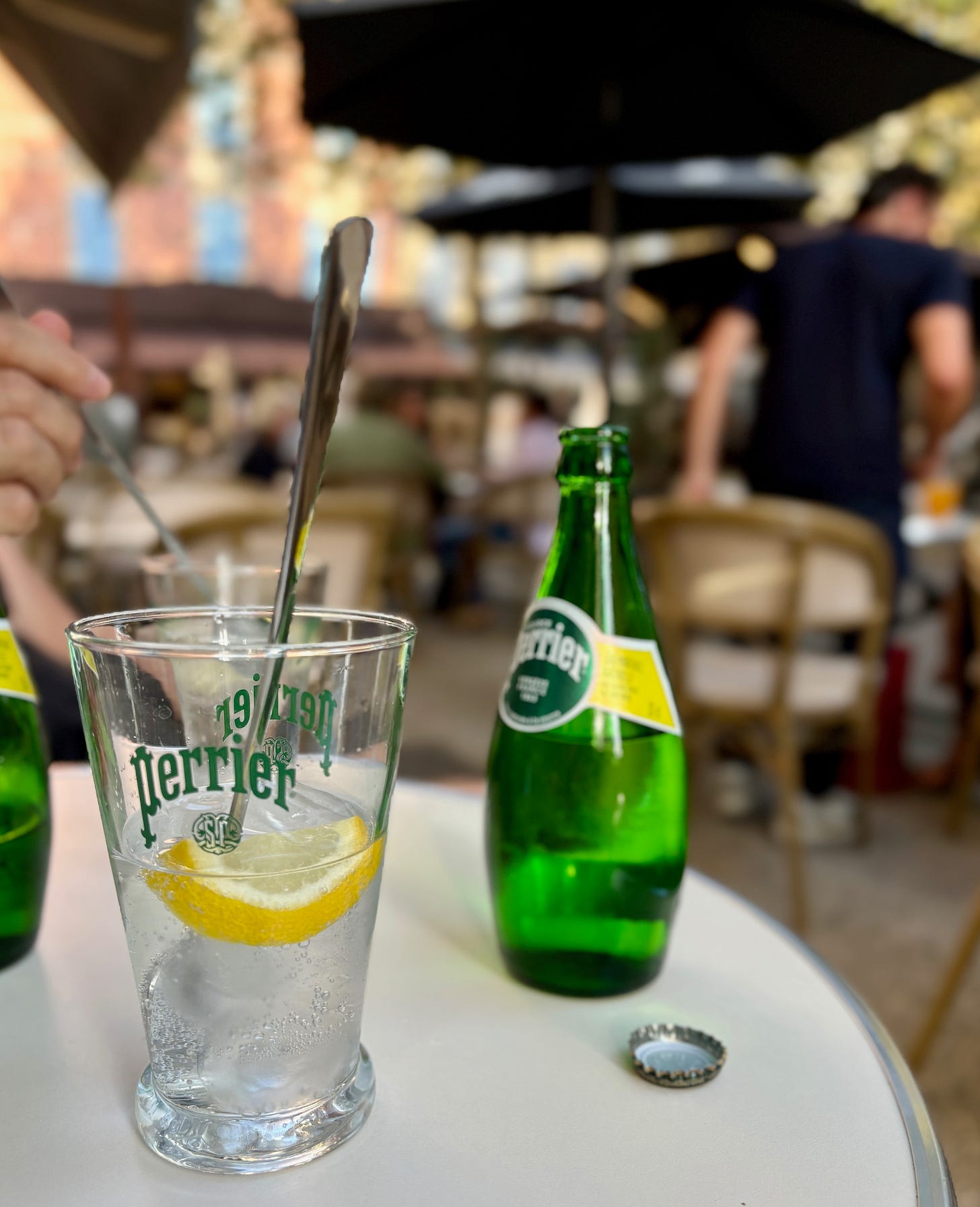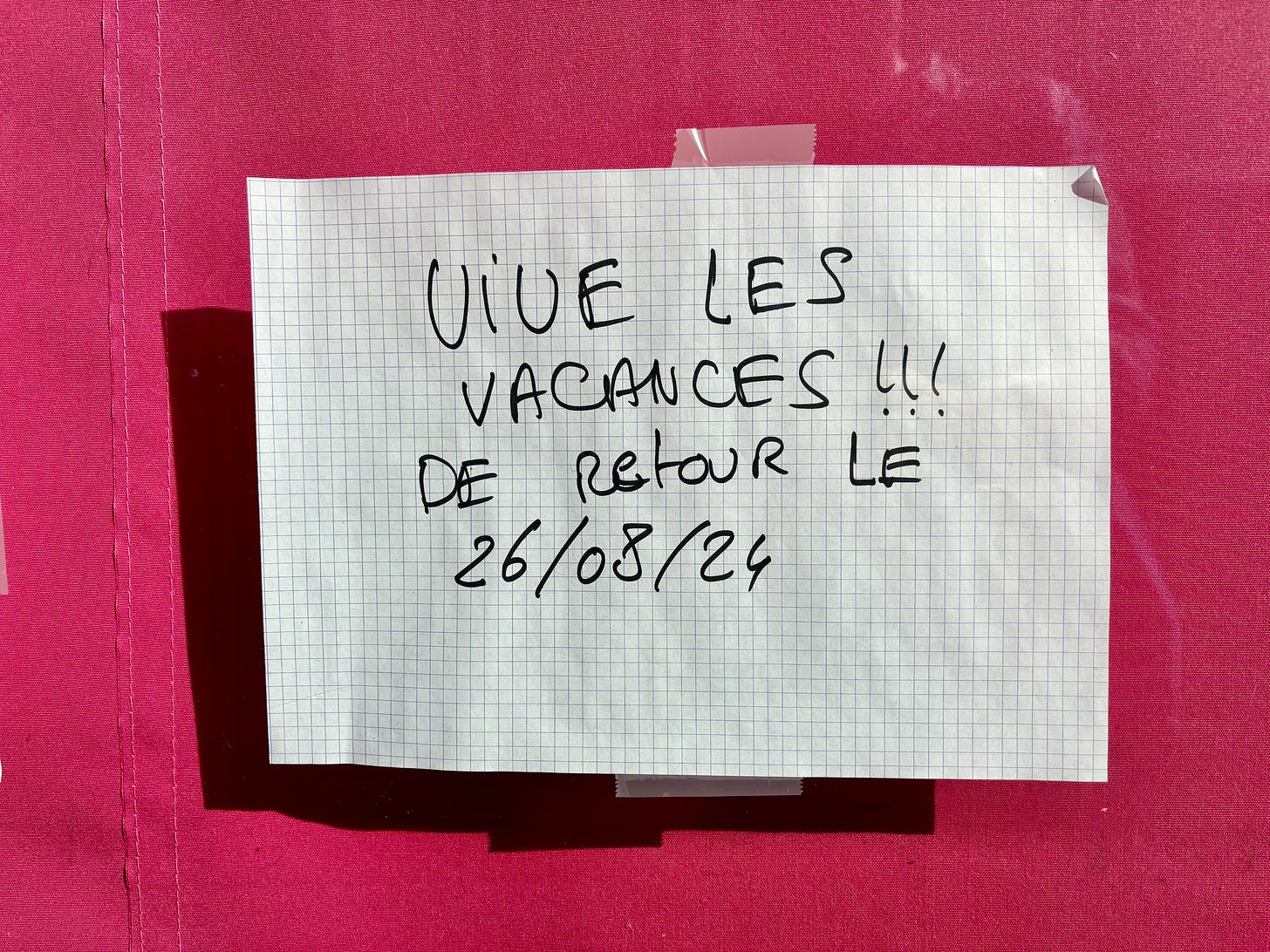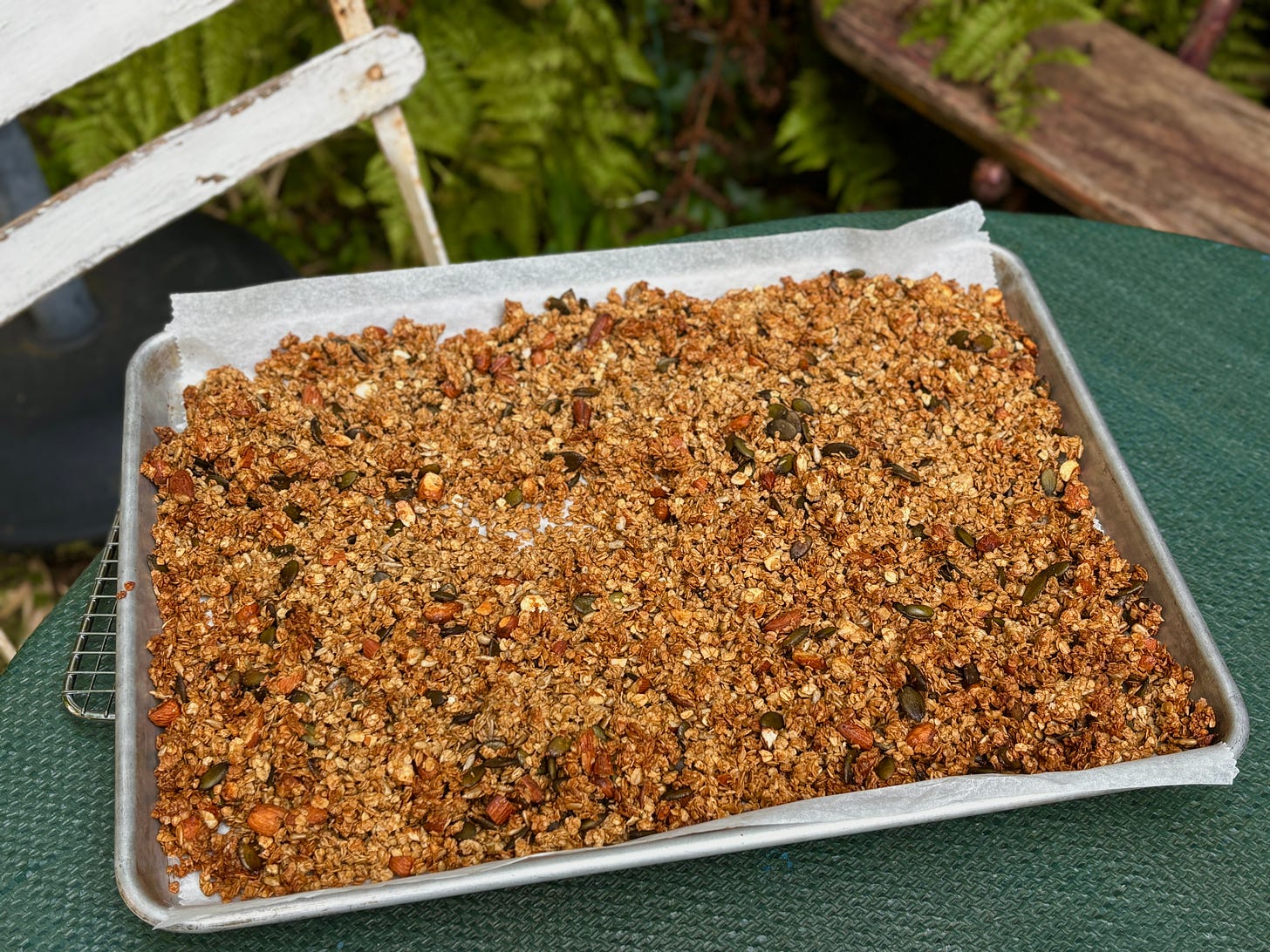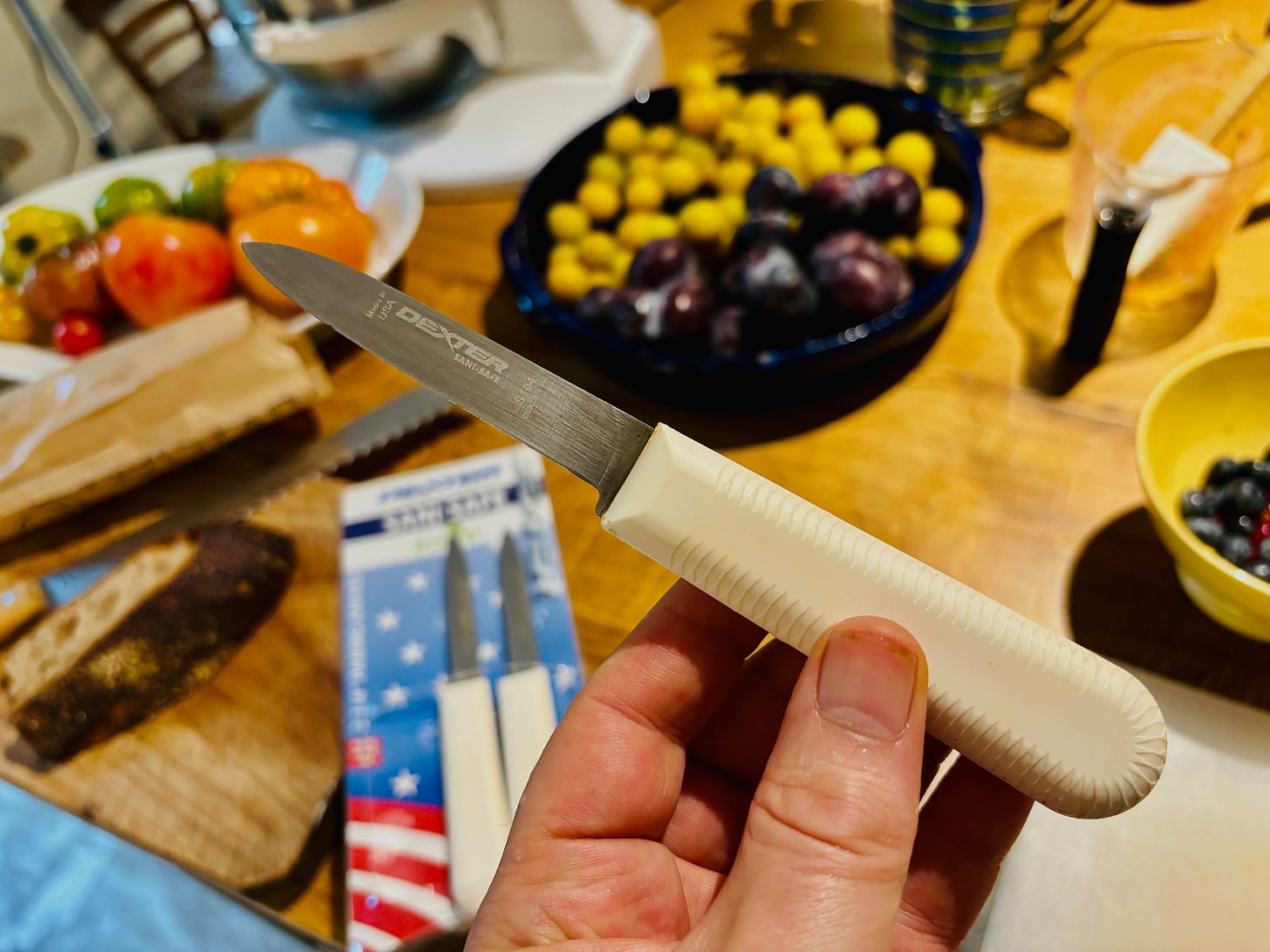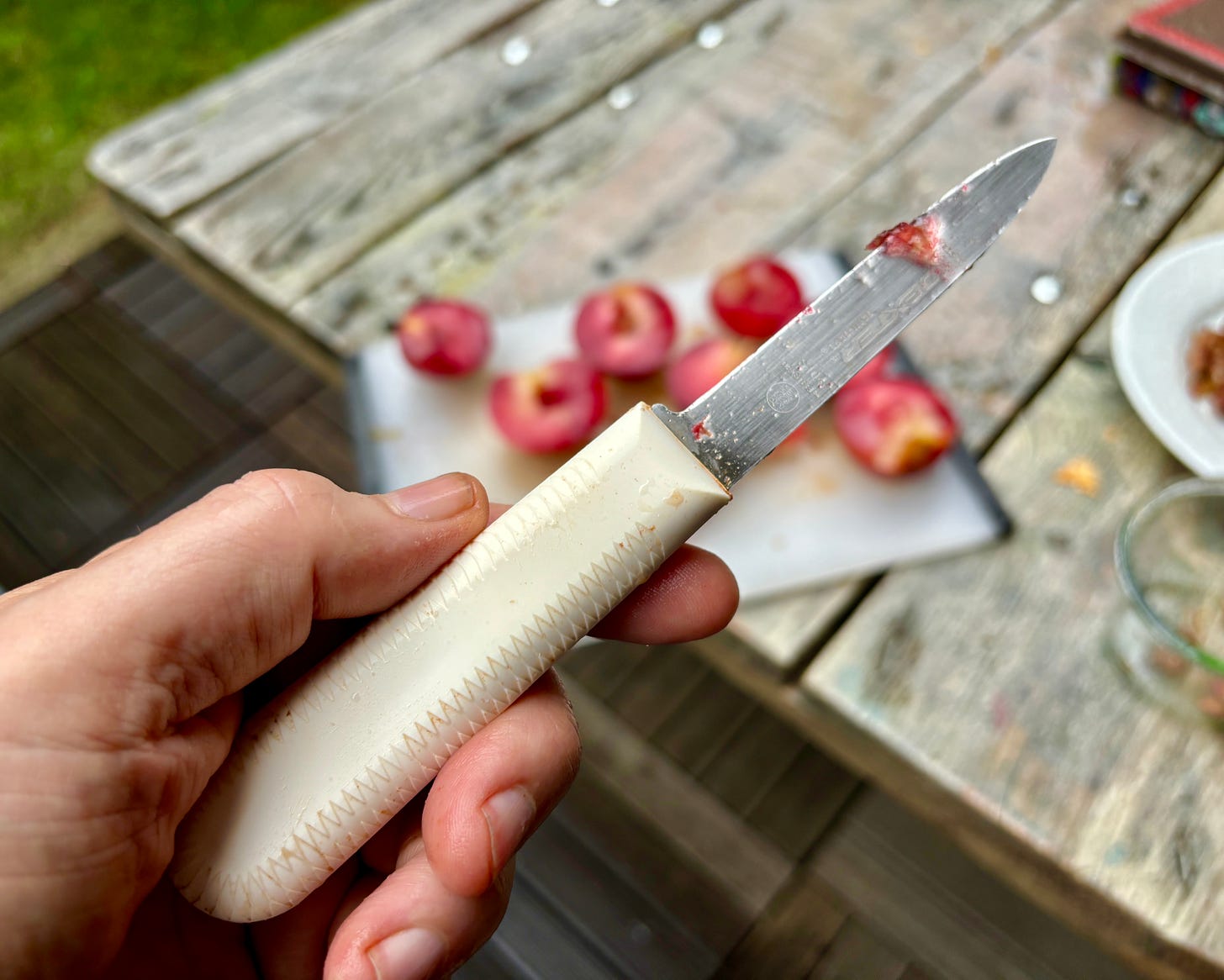It goes without saying that I think about food…a lot. (According to Romain, it’s too much.) But I can’t help it: It’s what’s on my mind all the time. A chef friend of mine in Paris recently went on le régime — a diet — and said the hardest part was not eating what she wanted to eat. “I love to eat!” she admitted, with a little sadness but also with a smile.
I feel the same way. I was having lunch with another friend in August and said that I gave up the idea of ever having abs (well, visible ones — they’re under there, somewhere) because I wanted to eat French fries. I’d met a model in New York once who was in his twenties, who had a lean, muscular body, but confided in me: “I’d kill to have a French fry.” It made me sad that someone that young couldn’t even have one single French fry. I’m pretty sure at his age, I was wolfing them down by the handful, whereas now, I reach into the pile and grab only the crispy ones and leave the lesser-cooked ones behind. I’m not wasting the calories on those limp losers.
One of the reasons I moved to France was for the food culture. There’s a strong food culture in San Francisco as well, so it was basically a horizontal move. No one told me about winter in Paris, though — I thought every season was spring. And no one told me there were twenty-one verb tenses in French. Who knew I’d have to learn a foreign language to live in another country? I thought I’d just have to say “Bonjour, Madame” before I went into a shop, and everything else would be a breeze.
What helped me to blend in was that I was interested in food, which is a popular subject in France. When I met bakers, chocolatiers, and pastry chefs, they didn’t think much of me with my rudimentary French. But when I started talking about the technical aspects of our/their profession, they got that I wasn’t just some dope who couldn’t differentiate between the ranges of past-tense French verb conjugations — there’s one for a past action that happened before another past action, and even one when the past tense was about something “historic.” Thankfully, I knew how chocolate was tempered, the qualities of different crus of chocolate, and even more importantly, what it was like to work 10- to 12-hour days in a professional kitchen.
France is a country that rewards you the longer you stay. Unlike the U.S., where it’s easy to meet people and the default of waiters and salespeople is, “Can I help you?,” in Paris, you have to earn it, and longevity (and learning the language) pays off.
There’s the brutal process of getting and renewing your visa, which I told someone who recently had success in renewing his that it’s intentional, so that when you finally get it, you forget everything else and just feel thankful. I had to renew mine every year, a process that takes at least six months, which made staying here a challenge.
The longer I stayed, the more I integrated. There’s a popular belief that the French don’t like Americans, which isn’t true, and you don’t have to lose what makes you American to live in France. I had several French friends and co-workers in California who’d lived there for decades and still made mistakes in English and kept their strong French accents, but who had acclimated to the American way, and sometimes it’s not easy going back.
A French friend who moved back to France told me she was shocked at how impolite the cashiers at the supermarchés were. “They just shove your groceries at you!” she told me. She’d also forgotten about the overload of paperwork; when she signed up for a family plan with a mobile phone provider, not only did all her kids have to come into the shop, in person, but she had to present birth certificates for each of them to prove they were her actual children.
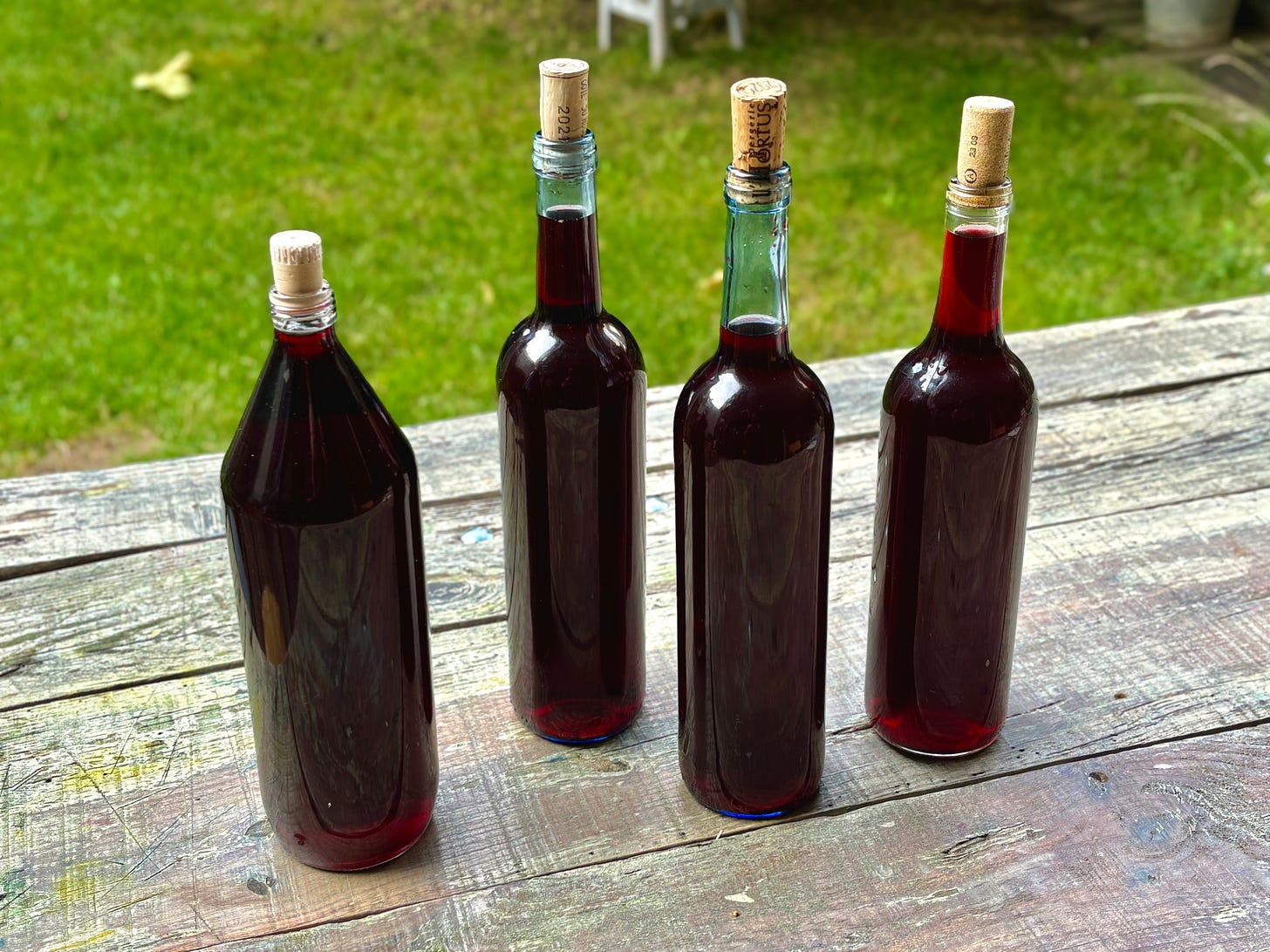
Another main cultural difference is that during the summer, almost everyone goes on vacation, called les vacances, which literally translates to vacations (plural). It’s one long vacation and more of a concept than a series of vacations. It started in 1936, when hourly workers didn’t get any paid time off. Fed up with how they were treated, they went on strike and won the right to get paid vacations.
Alas, indépendent, or self-employed, people never went on strike for that benefit, so we stuck close to home this summer. I have plenty of work on my desk and a bunch of recipes to test (which was more fun than the paperwork), before we head out this month for our vacances.
It’s when you take a “hard stop,” something I learned when I was on book tour in Los Angeles a while back and had a professional escort with me. No, she wasn’t that kind of escort, but was someone who specialized in accompanying authors on book tours. I had three big events in one day, and she made sure that when it was noon, I was out of there precisely at noon, yanking me away even if I was talking to someone in mid-sentence.
She also had great stories about other authors. When she was escorting one legendary writer, the hotel called and said to come pick her up right away. When she arrived, the author was wearing a mink coat, with nothing on underneath, walking down the middle of the street after a few too many martinis. Another was arrested for shoplifting and had to be bailed out before their event that evening. Ever since then, I’ve made it a point to get a receipt when I buy anything in a shop (France has trained me well…#paperwork) when I’m on book tour, and I make sure that I’m only seen in public with book escorts, not any other kind.
It’s been a fun summer in a lot of ways; I had an amazing time at the Olympics, and when the city empties out in late August, it’s a nice time to be here. And now, it’s time for my annual break, to refresh and rejuvenate.
I’m off until later in September, stepping away from the computer, and email, getting some beach time, enjoying some sunshine, and definitely having some good food while I’m away, including a few French fries.
-David
Banana Granola
I found myself with a few extra bananas on hand last month, so I did what everyone does when they have a problem: I took it to social media. I posted that I didn’t know what to do with them, making a point to say that I didn’t have any more space in my freezer, and since I’m testing recipes for cookbooks right now, I didn’t have time to bake anything with them, such as banana bread.
Many helpfully suggested that I freeze them…or bake something with them, such as banana bread😊.
But I learned that people have very, very strong opinions about ripe bananas, and the post generated over 575 comments, unlike the post right before it, which got 24 comments.
Not only did it not need to be stored in the freezer, but the suggestion to make banana granola appealed to me since we were running low on granola. I usually make this recipe for granola, but the commenter Polly suggested an Insta recipe by Claire Thomson of 5 o’clock apron and the author of Veggie Family Cookbook. Being an Insta recipe, hers was a casual affair, and she called for handfuls of ingredients. Early in my days of sharing recipes online, back in 2008, I wrote a post: What is a handful? because people asked me what that meant.
So I toggled Claire’s recipe a bit, adding a bit of precision, but it’s a pretty flexible recipe, and if you find yourself with a few ripe bananas, and no freezer space, nor the desire to make banana bread, give it a try.
Preheat the oven to 300ºF (150ºC) and line a baking sheet with parchment paper.
In a big bowl, mix together:
500g (5 1/2 cups) old-fashioned rolled oats
80g (3/4 cup) nuts (walnuts, almonds, or pecans), coarsely chopped
65g (1/2 cup) pumpkin seeds
65g (1/2 cup) sunflower seeds
40g (1/2 cup) unsweetened dried shredded coconut
2 teaspoons ground cinnamon
1 teaspoon kosher or sea salt
Heat in a medium saucepan:
100g (1/2 cup) packed light brown sugar
90ml (6 tablespoons) neutral-tasting vegetable oil
80g (1/4 cup) date or carob molasses; you could use agave nectar, honey, or maple, rice, or Golden syrup instead
Once warm, remove from heat and add:
Two medium-sized ripe bananas, cut into large pieces. Puree with an immersion blender or in a food processor, blender, or mini chopper.
Use your hands to gather clumps of the mixture and distribute everything—the clumps and non-clumps—on the prepared baking sheet. Bake until deep golden brown, about 30 minutes, stirring the granola once or twice during baking so it cooks evenly. Cool completely, then store in an airtight container.
Links I’m Liking
What’s happening to all the portable AC units athletes bought, who were staying in the Olympic Village in Paris? (The Verge)
A deep dive into the history of the croque monsieur. (via
)How to make cultured butter at home. (via
)7 myths about cooking and baking with sugar. (Washington Post/article unlocked)
Paris nightclub tries to charge Olympic gold medalist Simone Biles $26,000 for a bottle of Champagne. (People)
The historic mid-century modern home where Emily in Paris (Lily Collins) actually lives. (Vogue)
Things I Like
When I was starting my career working in restaurants, you needed to have a German knife, or knives, if you wanted to be taken seriously. Nowadays, from what I’m told, everyone wants to have Japanese knives that cost hundreds of dollars each.
At home, I’ve generally used German knives, although I’ve added a few French ones to the mix. Sometimes I open the dishwasher after the cycle to find a paring knife crammed into the silverware basket, or a chef’s knife gets placed in the sink in the jumble of pots and pans. I used to joke that the best way to keep your knives sharp was to not let anyone else use them, but that’s pretty hard when you’re sharing a home, and a kitchen.
So a couple of years ago, I was at Surfas in Los Angeles, roaming the aisles, and spotted these Dexter knives. They were my Proust madeleine, and I remembered my early days working in restaurants, when all the prep cooks used white-handled Dexter knives; they were cheap, and no matter what happened to them — I’ve seen them literally dumped into a plastic dishwasher rack with a bunch of silverware and run through the hot dishwasher — they remained unfazed by the experience. The company calls them: White handle. Gold standard.
I’ve had this one, above, for a couple of years, and it remains the sharpest (and cheapest) knife in my kitchen. I bought a 3-pack and am still on my first one, which is doing well, and I’m even taking it on vacation with me.
The knives are made in America, and I haven’t seen them outside of the States (the only set I’ve seen was a 3-pack on Amazon.fr for a whopping €165, which is a big nope), but you can get them at Surfas, the Dexter website, and Amazon US (where I see they also sell them in colors, as well as at Surfas). You can also pick them up at your local restaurant supply shop.




